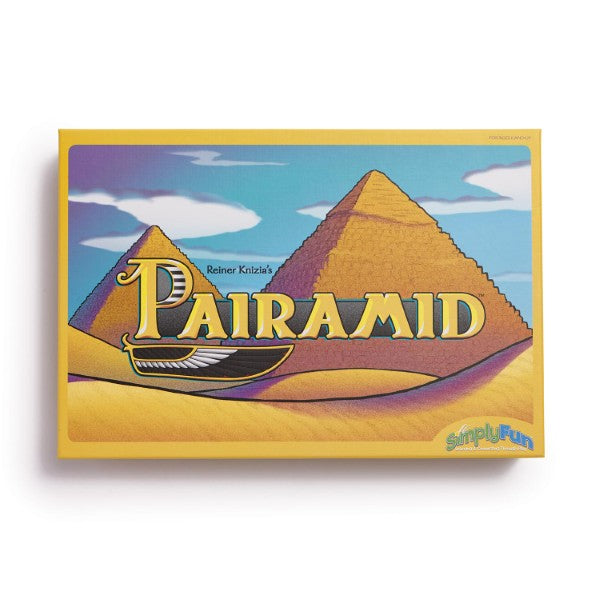
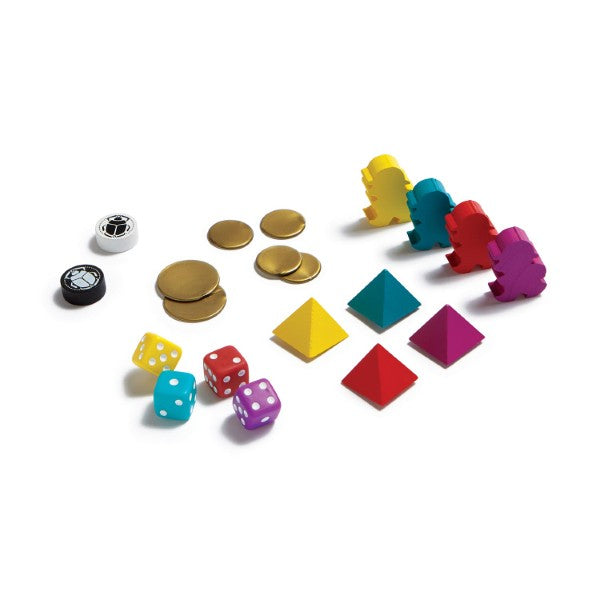
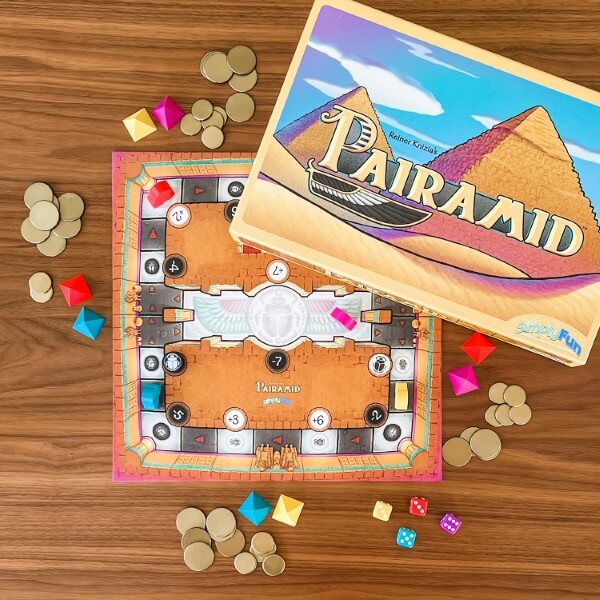
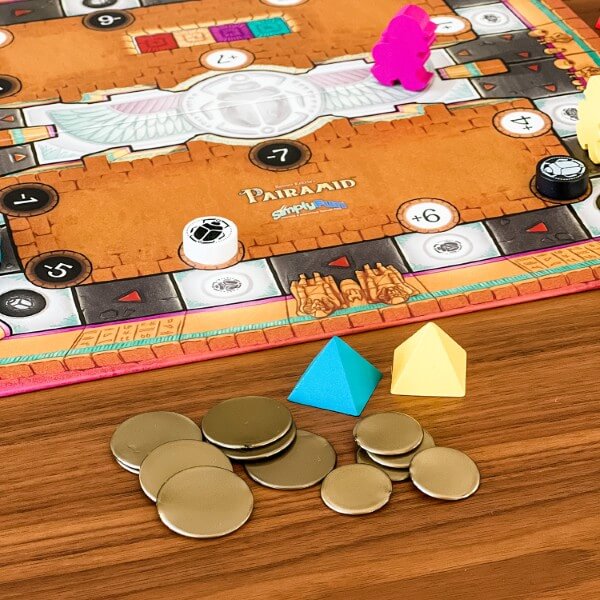
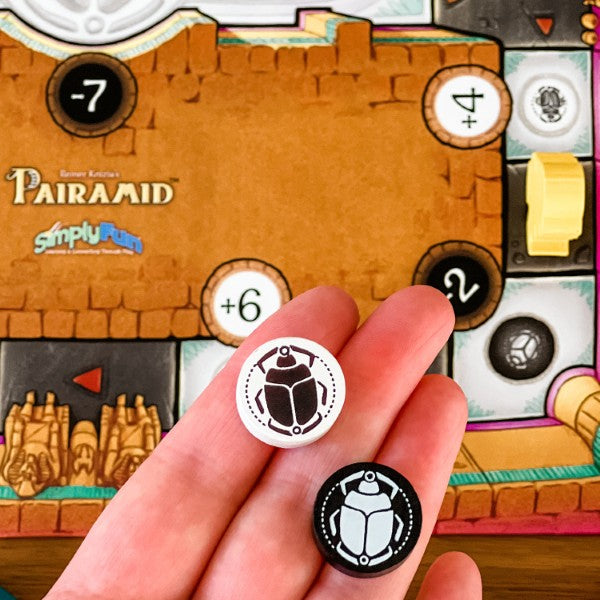

Collapsible content
This game supports two to four players, ages 8 and up, each moving the four different researchers around the board to collect treasures and avoid traps.
The game comes with an Egyptian themed board, a white scarab to show treasure and a black scarab to mark traps. There are several pyramid markers to show your team colors, 4 researchers with dice in matching colors, and of course a huge pile of treasure!
Start with all the researcher pawns in the center chamber, and give each player two large coins (each is worth 3 points).
In Pairamid, you normally share colors with two other players. You try to support your own colors, and delay the others. Since the game rewards good tactical decisions, it’s important to plan ahead, and look for the best option under constantly changing game conditions.
Unlike other games, you do not play a single color in Pairamid. Use the pyramid markers to keep track of which colors you are supporting. You always play in two colors as follows.
With four players, each gets two different colors, and shares a color with each of their neighbors.
With three players, remove one color, and again you share a different color with each neighbor.
If just two people are playing, one gets two different pyramids, and the other gets the other two colors. Set aside the rest of the pyramids.
The wisest player begins the game. Roll all the dice, and then choose one color to move. It doesn’t need to be one of the colors you’re supporting. Sometimes your best move is to delay an opponent! After you advance the researcher in the color you chose, put that die onto the game board to set it aside for now.
Pass the remaining dice to the next player in clockwise order. Continue this progression until a player is passed only one die. Rather than rolling the single die, this player will recover all dice from the board, and choose from all the colors.
Do not count any occupied spaces while moving ahead - only empty spaces.
If a researcher would pass the white scarab stop at that space instead. Any players who have that pyramid marker of that researcher’s color receive treasure tokens as indicated on the chamber.
Similarly, if a researcher reaches the black scarab, players supporting that color lose points. If you do not have enough coins to pay the penalty, give as many as you have.
Now move the scarab to the next highest chamber. If the new chamber happens to also be occupied, assess rewards or penalties for this space, and move the scarab again.
The game ends when a researcher collects plus or minus seven treasure from a scarab that has advanced to the Great Chamber in the center of the board.
The game may also end immediately if both scarabs are placed in the Great Chamber.
Total your treasure tokens. Large tokens are worth three points, and small tokens are worth one. The player with the most points wins!
Pairamid gives you deceptively simple choices, but your decisions are still critical to winning the game. It’s the ideal blend of meaningful choices and casual gameplay. We hope you love it as much as we do!

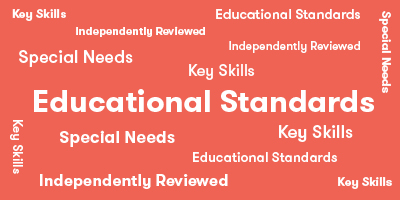
Core Standard*: Math
Math:
- Mathematical Practice
- Make sense of problems and persevere in solving them. Grade Levels 3rd, 4th, 5th

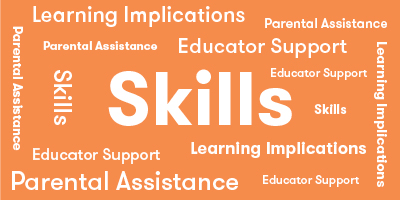
Explore
What Does Child Do To Use Skill In The Game?
Players need to keep aware of the location of the Scarabs, where they will go next, and which Researchers are heading towards which Scarabs.
How Parents Can Assist Learning
Remind children to look at the board carefully during play, making sure to identify where the the Scarabs are and where they can move next.
Learning Implications and Educator Support
Playing Pairamid helps children develop spatial reasoning skills, situational analysis, risk assessment and perspective changing.Remind children to look at the board carefully during play, making sure to identify where the the Scarabs are and where they can move next.
Determine
What Does Child Do To Use Skill In The Game?
Players will determine the number value on each dice rolled, and spaces where each Researcher can be moved.
How Parents Can Assist Learning
Before making a move, allow young players to test the different possibilities by moving each Researcher pawn relative to the dice rolled. This will help children determine the consequences of the different moves, while simultaneously help them begin to develop the capacity for making mental models.
Encourage children to think about whether they want to score points (i.e. get to the White Scarab) or make opponents lose points (i.e. move their Researchers towards the Black Scarab) prior to determining which die to select. Having children take time to think about strategy also helps with impulsivity and keep them focused on goal of game.
Learning Implications and Educator Support
Making mental models of a space and movement is an advanced, complex cognitive skill. Young children are learning how to do this, and therefore, may need tangible support. Allow young players to test the different possibilities by moving each Researcher pawn relative to the dice rolled. This will help children determine the consequences of the different moves, while simultaneously help them begin to develop the capacity for making mental models.
In addition to determining which die to choose and where to move the chosen Researcher, children need to determine what type of strategic approach, offensive or defensive, to use during the game. An offensive strategy would involve trying to move Researchers that are the same colors as your pyramids to the location of White Scarab, or where White Scarab will move next. Defensive strategy would involve trying to move opponent's Researchers towards the Black Scarab's location.
Compare
What Does Child Do To Use Skill In The Game?
Players will compare the different options they have for moving the Researchers on their turn.
How Parents Can Assist Learning
Comparing is one of the essential skills used in Pairamid, and is closely tied to how players Plan and Solve the game successfully. After Determining their options, help children look at not only where they can move a Researcher to score or lose points, but also how they can set up Researchers to take advantage of a Scarab's being moved to the next Chamber.
Learning Implications and Educator Support
Comparing in Pairamid involves situational analysis, cause and effect analysis, spatial relations and probability assessment (related to likelihood of rolling the dice to create a desired result). To make these comparisons, children will engage in making mental model of different moves and related consequences. To help children learn these skills, ask them to describe aloud the different options they are considering and the potential consequences for themselves and opponents for each option.
Predict
What Does Child Do To Use Skill In The Game?
Based on prior moves, players will begin to predict what they think opponents are trying to accomplish. For example, a player may predict, "I think my opponent is trying to make my Researcher lose points on the next round."
How Parents Can Assist Learning
Pairamid is a great strategy game. Strategies are built based on identifying numerous move options and the risk/reward for each option. Additionally, children can decide to be more offensive or defensive, and change these approaches throughout the game. To help children predict, ask them to share different moves they are considering and what they think an opponent might move in response.
Learning Implications and Educator Support
Playing Pairamid helps children develop spatial reasoning skills, situational analysis, risk assessment and perspective changing, all skills that can be used to make more accurate preditions of opponents' moves. Additionally, making predictions in Pairamid requires analysis, observation, empathy and interpretation.
Pairamid is a strategy game that involves moves and counter moves like chess or checkers. To be most successful in games like this, children need to predict what opponents will do. While an individual prediction may be incorrect, the player that makes more correct predictions overall has a better chance to win the game. Encourage children to verbalize their predictions which will help you understand their thinking and, potentially, collaborate to strengthen their predictions by looking at variables the children may not have considered.
Plan
What Does Child Do To Use Skill In The Game?
Players engage in planning and adapting plans throughout the game, such as, which Researcher to move on my roll, when to use the shortcut, when to leave a Researcher in the shortcut, when to leave a Researcher in a spot, when to lose points on one turn to gain more on a later turn, etc.
How Parents Can Assist Learning
This, along with Compare and Solve, is one of the essential skills developed and used in Pairamid. When the game starts, educators can ask children to think about different approaches they might take to win the game, such as concentrating on gaining as many points as possible or trying to make opponents lose as many points as possible. As the game progresses, the child can try to execute the strategy. If the strategy is not working, suggest alternatives to help them adapt and make new plans.
Learning Implications and Educator Support
This, along with Compare and Solve, is one of the essential skills developed and used in Pairamid. Planning is a particularly important skill for developing strategic thinking and reaching a goal. When the game starts, educators can ask children to think about different approaches they might take to win the game, such as concentrating on gaining as many points as possible or trying to make opponents lose as many points as possible. As the game progresses, the child can try to execute the strategy. If the strategy is not working, suggest alternatives to help them adapt and make new plans.
Additionally, to be successful in Pairamid requires thinking about consequences beyond a player's immediate move. This type of long-term, sequential thinking is important beyond the game for activities such as building forts, making art, successfully completing schoolwork on time and launching a new business from a lemonade stand to a company later on in life.
Practice
What Does Child Do To Use Skill In The Game?
Like classic strategy games such as chess or checkers, Pairamid has levels of complexity that players will master the more they play the game.
How Parents Can Assist Learning
Parents can engage children in conversation about their choices in order to help children understand different risks and benefits in their strategy.
Learning Implications and Educator Support
Pairamid has several implicit levels of mastery. Therefore, the more children play the more capable they will be in developing and executing increasingly sophisticated strategies. Also, as they become proficient, they will be able to teach others. Teaching others demonstrates mastery, the final stage of learning, and is wonderful for building self-esteem, confidence and intrinsic motivation.
Solve
What Does Child Do To Use Skill In The Game?
Players will integrate their Determine and Plan skills, along with some Predict, to execute moves and strategies to win turns and the game. They will also adapt to the moves of opponents by making counterattacks or defensive moves like placing their Researcher into the shortcut to avoid being moved to the Black Scarab.
How Parents Can Assist Learning
Children probably do not need support in determining how to move a Researcher to an available spot that would score points or get them closer to scoring point (or vice versa for opponent's Researchers) in a current move. Therefore, help them with thinking ahead. Ask questions like, "If you move a Researcher to a Scarab, where will the Scarab go next? Will that help you or someone else?" or "Before you make your move, think about what dice the next player is going to roll. How will that effect your Researchers?"
Learning Implications and Educator Support
Pairamid involves uses of visual spatial problem solving, directionality and if/then problem solving.Children learn new information constantly during game play. This information directly effects how children strategize an approach for selecting Dice and moving Researchers and ultimately solve the game. Encourage children to remain flexible in their approach to the game. Because there are so many options and an element of chance (i.e. the dice), it is difficult to predict what opponents will do. Thus, it is important to adapt based on prior moves. Adapting is key to building resilience and creative problem solving.
Demonstrate
What Does Child Do To Use Skill In The Game?
Players may demonstrate if encouraged. See Implications for Learning and Adult Support.
How Parents Can Assist Learning
If a child makes a particularly great move, ask the child to share their thinking. As a corollary, if a child makes a move that ultimately helps another player unintentionally, gently demonstrate other options that they could have considered. Do this only when the child is learning the game. After the game, talk about what everyone learned about strategy and how they might play the game differently next time.
Learning Implications and Educator Support
If a child makes a particularly great move, ask the child to share their thinking. As a corollary, if a child makes a move that ultimately helps another player unintentionally, gently demonstrate other options that they could have considered. Do this only when the child is learning the game. After the game, talk about what everyone learned about strategy and how they might play the game differently next time.
Imagine
What Does Child Do To Use Skill In The Game?
Players may use their imaginations if encouraged. See Implications for Learning and Adult Support.
How Parents Can Assist Learning
Because Pairamid is inspired by ancient Egypt, encourage discussion during the game about what life might have been like in the time of the Pharaohs or what would they do if they were an archeologist finding a new pyramid today.
Learning Implications and Educator Support
Educators can use Pairamid as part of a curriculum teaching ancient Egypt, adding content to the game such as names of Pharaohs, pyramids, location of Egypt and the history of how the pyramids were built.
*Data compiled from CCSSI ELA Standards, WA Science Standards, and Washington Social Studies Standards

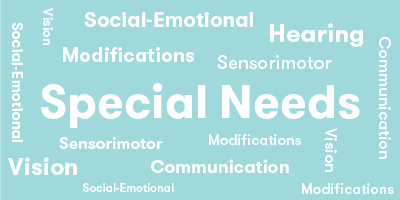
Cognitive
Suggestions for How to Modify Play Experience
Have children with cognitive delays do the planet puzzle first. If they are successful with this puzzle, move to the continents. Use a black marker to outline the puzzle piece shapes on the underlying wooden board. This will make it easier for children with cognitive delays to match the shapes without being distracted by the other markings. Finally, the U.S. puzzle can be tackled. This order is based on the complexity of the puzzles, not the conceptual understanding needed. Children with cognitive delays may not be able to understand the concepts of these three puzzles, but can work on the matching, spatial orientation, and persistence to complete them.
Communication
Suggestions for How to Modify Play Experience
To encourage communication and language production, ask children to explain their strategy at each turn. Discuss other options with all the players. This can be done either before or after a turn. This increases conversational abilities as each player offers an opinion about a move. For example, "I think I would have moved the red one so you are closer to the white scarab." "I don't think so. I wanted to move the yellow so that when my red gets the 3 points and the scarab moves over here, so yellow won't get 4 points." This approach gives children practice in conversation, and also enhances comprehension of complex language structures. The visual stimulus of the board reinforces the comprehension. Comprehension of complex language structure is necessary for reading comprehension.
Sensorimotor
Suggestions for How to Modify Play Experience
The game has fairly large spaces and the game pawns are large as well, so children with fine motor concerns may be able to manipulate the items on the board. If necessary, pawns could be played on their sides so they are not knocked over.
Social Emotional/Behavioral
Suggestions for How to Modify Play Experience
Pairamid is perfect for a team game. If at least four people are playing, they can make two-person teams. The teams then discuss all of their options prior to making a move. This cooperative approach encourages children to listen to others' ideas as well as offering their own. Children then have to negotiate which is the best move for the current turn. Encourage children who are shy to offer their opinions and not just accept the other team member's ideas. Try not to say, "What do you think?" as the shy child may just shrug or say, "his idea is fine." Instead, say, "Show me another option. Why would that be a good option." Get the child to use physical gestures first, as this is comfortable. Then ask for an explanation. For children who are perhaps too assertive, remind them to ask for their partners ideas. Then suggest they mentally "play out" each option to see which is the best. This encourages assertive children to take a step back long enough to listen to and try out other people's ideas.
If children are impulsive and act without thinking ahead, encourage them to think about not only what to do in the current move, but also what they will do in the next move. For example, play several rounds of practice when learning the game. As the child makes a move, say, "Let's look at the options for each piece. If the red moves here, what would be a likely next move? What are the options for purple? What if purple passes you?" Of course each move depends on the roll of the die for each player, but the goal is to get children to think ahead to future possibilities.
Vision
Suggestions for How to Modify Play Experience
This game involves reading dice. If child cannot read typical sized dice, purchase much larger colored dice where the colors are distinct and the dots on the die have a high contrast.
Hearing
Suggestions for How to Modify Play Experience
The game can be played with gestures and facial expressions if other players do not use alternative communication.
*Data compiled from CCSSI ELA Standards, WA Science Standards, and Washington Social Studies Standards

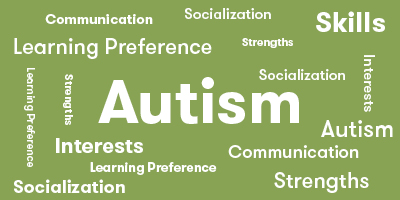
Autism Special Considerations
Appears to ignore other's communication and/or has difficulty giving eye contact to a communication partner
Is This Game Appropriate for Child with Characteristic? Yes
Can Child with Characteristic Play Game w/o Modification? Yes
Strategies for Developing Compensatory Skills:
Sit at an angle to the child, so direct eye contact is not needed.
Look at the game instead of each other.
Use unusual or exaggerated inflection to begin a communication about the game. This attracts the child's attention.
Has difficulty understanding complex verbal directions
Is This Game Appropriate for Child with Characteristic? No
Can Child with Characteristic Play Game w/o Modification? No
Strategies for Developing Compensatory Skills:
Pairamid is not an appropriate game for children who have difficulty understanding complex directions. Children need to move be able to move all markers both offensively and defensively. In addition, the directions are complex for what to do in different circumstances.
Uses vocabulary inaccurately or demonstrates echolalia (repeating another's speech)
Is This Game Appropriate for Child with Characteristic? Yes
Can Child with Characteristic Play Game w/o Modification? Yes
Strategies for Developing Compensatory Skills:
Respond to immediate echolalia (repeating what was just said) by rephrasing the child's response into a correct format, so the child can hear and repeat that phrase. For example, assume you are playing with a child named Andy and you say, "Your turn," and Andy repeats, "Your turn." You can say, "It's Andy's turn. You say, my turn." This allows the child to hear and repeat the correct response. Eventually, the child will pick up the pattern of response.
Delayed echolalia (repetition of previously heard comments) may have a hidden meaning or association. Look for connection in the phrase used to the current situation. For example, the child says, "After these messages we'll be right back!" Think what the repeated phrase is associated with for the child. Try to interpret what is meant and rephrase it for the child. For example, you might respond by saying, "It sounds like you want a break for a few minutes. Is that what you mean? You can tell me, 'I need a break.'"
Gets stuck repeating a verbal topic or physical actions and/or has difficulty attending to others' actions or topic.
Is This Game Appropriate for Child with Characteristic? No
Can Child with Characteristic Play Game w/o Modification? No
Strategies for Developing Compensatory Skills:
Children need to pay attention to other player's intentions and actions, as there are both offensive and defensive components to play. For this reason Pairamid is not recommended for children with this concern.
Has difficulty producing speech/communication
Is This Game Appropriate for Child with Characteristic? Yes
Can Child with Characteristic Play Game w/o Modification? Yes
Strategies for Developing Compensatory Skills:
Use augmentative communication, such as picture cards. For example, a picture of person pointing to another person means "your turn." Communication during and after a play is not required
Has difficulty sequencing multi-step actions and/or doing complex abstract tasks
Is This Game Appropriate for Child with Characteristic? No
Can Child with Characteristic Play Game w/o Modification? No
Strategies for Developing Compensatory Skills:
Pairamid has very complex directions and involves abstract tasks. It is not recommended for children with special needs.
Demonstrates difficulty initiating and maintaining social interactions
Is This Game Appropriate for Child with Characteristic? Yes
Can Child with Characteristic Play Game w/o Modification? Yes
Strategies for Developing Compensatory Skills:
Develop a social story to be read at the start of a game. A social story is a short booklet that illustrates how a child can use positive social skills. It includes two to five descriptive statements and a directive statement. For example: "When I watch others, I will know when it is my turn. Others like me when I take turns. I will watch what others do with their pieces and listen to what they say. Others like it when I talk about the game." Add photos or drawings of the child doing the actions described in the story.
Role play social situations and reinforce appropriate words and actions. For example, role play commenting on another player's turn. For instance, "You landed on a penalty space."
Use video feedback of positive social behaviors. Video of actual play enables children to see what they or others did. Appropriate actions and interactions can then be discussed.
Acts out or demonstrates avoidance behaviors when frustrated, overwhelmed, or needs more sensory input.
Is This Game Appropriate for Child with Characteristic? Yes
Can Child with Characteristic Play Game w/o Modification? No
Strategies for Developing Compensatory Skills:
Reduce extraneous noise or allow the child to wear head phones or ear plugs if loud sounds cause anxiety.
A weighted vest worn during the game may provide additional pressure input and thus reduce fidgeting due to sensory needs. Pressure can be calming when used for no more than 20 minutes at a time.
Practice a phrase to ask for help and role play situations in the game where it is needed.
Provide techniques for self-calming, such as holding a special toy.
Allow time for movement. For example, a child who needs to move frequently can be given an opportunity to 'celebrate' their turn by running around the table or jumping up and down 10 times.
Has short attention span for non-preferred activities
Is This Game Appropriate for Child with Characteristic? No
Can Child with Characteristic Play Game w/o Modification? No
Strategies for Developing Compensatory Skills:
Not recommended for children with a short attention span.
Needs sameness or consistent routines and/or has difficulty with transitions from one activity to another
Is This Game Appropriate for Child with Characteristic? Yes
Can Child with Characteristic Play Game w/o Modification? Yes
Strategies for Developing Compensatory Skills:
Play games at the same time every day, so the child anticipates the game routine.
Change the location of the game, so the child may play in different rooms, at the table, or on the floor. This will build tolerance for variation. Prepare the child ahead time for the introduction of a new game. Talk about aspects that will be motivating for the child, and let them explore the parts of the game before setting out the whole game.
Provide a structure for placement of game pieces that can be the same each time the game is played. For example, have a specific location for where the board goes, the pieces, etc.
Provide choices for how the child can be involved in set up or clean up. For example, you might ask, "Do you want to set up the board or hand out the pieces?" Involve the child verbally and with actions for the transition to the game table or at the end of game play. For example, you might say, "Let's look at the pictures on the game box and guess what it is about."
Use an object cue. Let the child hold an object from the game or activity you want to introduce prior to the transition. For example, if you were intending to play Pairamid, you would hand the child a pyramid from the game and say, "Look here is a pyramid. What game does it go with?"
Has difficulty understanding others' feelings, intentions, and the reasons for others' actions.
Is This Game Appropriate for Child with Characteristic? No
Can Child with Characteristic Play Game w/o Modification? No
Strategies for Developing Compensatory Skills:
Pairamid is not recommended for children who have difficulty understanding others intentions and reasoning. Children need to anticipate other players' options and respond to plays both offensively and defensively.
*Data compiled from CCSSI ELA Standards, WA Science Standards, and Washington Social Studies Standards

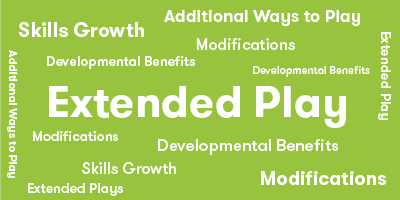
Extra Ways to Play the Game
Egyptology is of great interest to children of this age and older. Have them look up facts about Egypt, mummies, pharaohs, scarabs, pyramids, treasures, the Nile river, and so on. They can do this online or make a trip to the library to find books on Egypt. Have them make a long list of interesting facts. Before playing Pairamid, all players read over the facts on the children's list, add other facts, and ask questions to get more information. Books also may be available for players to examine if needed.
When the game is played all players have an option for obtaining additional points. Whenever a player rolls the dice and two of the same number come up, the player has the option of stating a fact about Egypt for an extra point. Keep track of these extra points on a piece of paper for the total at the end of the game. Players may want to add to their fact file in between playing games of Pairamid to give them an advantage during the game.
Materials Needed
Resources for learning about Egypt.
Developmental Benefits
This expansion has the benefit of motivating children to learn to use different reference materials, adding content knowledge about geography and world history, and providing a fun venue for remembering facts. Tell the children they are Egyptologists and finding fun facts for all the other players to learn about Egypt. They may discover a new passion!
*Data compiled from CCSSI ELA Standards, WA Science Standards, and Washington Social Studies Standards
Game Details
- 24 Large Treasure Tokens
- 18 Small Treasure Tokens
- 8 Pyramid Markers
- 4 Researcher Pawns
- 4 Colored Dice
- 1 White Scarab Marker
- 1 Black Scarab Marker
- 1 Game Board
- 1 Rules Booklet








